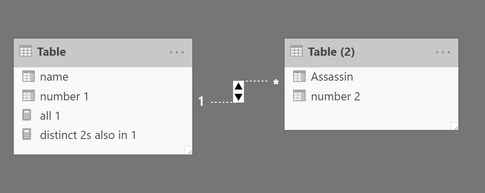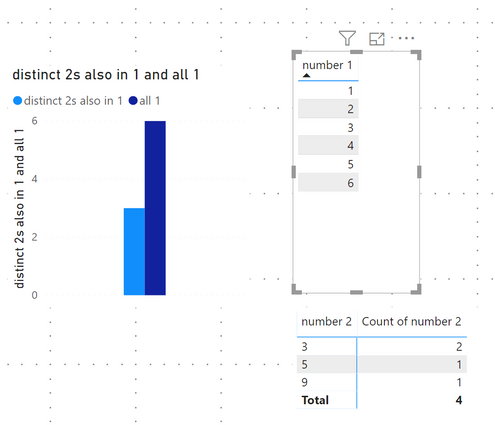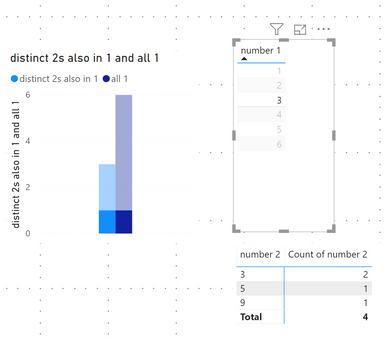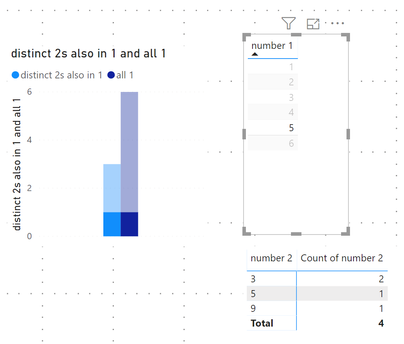Fabric Data Days starts November 4th!
Advance your Data & AI career with 50 days of live learning, dataviz contests, hands-on challenges, study groups & certifications and more!
Get registered- Power BI forums
- Get Help with Power BI
- Desktop
- Service
- Report Server
- Power Query
- Mobile Apps
- Developer
- DAX Commands and Tips
- Custom Visuals Development Discussion
- Health and Life Sciences
- Power BI Spanish forums
- Translated Spanish Desktop
- Training and Consulting
- Instructor Led Training
- Dashboard in a Day for Women, by Women
- Galleries
- Data Stories Gallery
- Themes Gallery
- Contests Gallery
- QuickViz Gallery
- Quick Measures Gallery
- Visual Calculations Gallery
- Notebook Gallery
- Translytical Task Flow Gallery
- TMDL Gallery
- R Script Showcase
- Webinars and Video Gallery
- Ideas
- Custom Visuals Ideas (read-only)
- Issues
- Issues
- Events
- Upcoming Events
Get Fabric Certified for FREE during Fabric Data Days. Don't miss your chance! Request now
- Power BI forums
- Forums
- Get Help with Power BI
- Desktop
- Re: USERELATIONSHIP needs selection to trigger cor...
- Subscribe to RSS Feed
- Mark Topic as New
- Mark Topic as Read
- Float this Topic for Current User
- Bookmark
- Subscribe
- Printer Friendly Page
- Mark as New
- Bookmark
- Subscribe
- Mute
- Subscribe to RSS Feed
- Permalink
- Report Inappropriate Content
USERELATIONSHIP needs selection to trigger correct calculation of measure? What am I missing?
Hey,
This might be a stupid question, but I seem to have a general misunderstanding when using Measures, Filters and the DAX USERELATIONSHIP function.
I seems to work just fine for my dataset, but I always need to make a selection thus filter the data for which it then evaluates the measure using USERELATIONSHIP correctly. If I unselect everything it seems to ignore the USERELATIONSHIP calculation and gives the results without it.
I just have 2 tables with an inactive relationship:
My measure is showing distinct values as such:
It is counting the number 2 value '9' which is not in Table 1.
If I make a selection in the number 1 table it shows the values correctly as only '1'
How can I get the result of '2' for my measure posted above that works without a selection?
I uploaded a very simple pbix file to show what I mean.
Thanks for your help.
- Mark as New
- Bookmark
- Subscribe
- Mute
- Subscribe to RSS Feed
- Permalink
- Report Inappropriate Content
Hi @systemic_till ,
You can add write measure to calculate table2 records with if statement to compare current row contents with tbale1 records:
Measure =
IF (
SELECTEDVALUE ( 'Table (2)'[number 2] ) IN VALUES ( 'Table'[number 1] ),
CALCULATE (
COUNT ( 'Table (2)'[number 2] ),
USERELATIONSHIP ( 'Table'[number 1], 'Table (2)'[number 2] )
)
)
If above not help, please explain your requirement more clarify with the expected result.
Regards,
Xiaoxin Sheng
- Mark as New
- Bookmark
- Subscribe
- Mute
- Subscribe to RSS Feed
- Permalink
- Report Inappropriate Content
Hi @v-pn ,
Thanks for you answer.
It didn't clarify my issue though.
In my setup, everything works as expected, if I make a selection.
Only when nothing is selected I am getting confusing results.
My expected result is 2, when nothing is selected.
Yet, I get a result of 3 as if the USERELATIONSHIP filter was missing entirely.
So, to clarify:
// Measure 1
no relationship = CALCULATE (DISTINCTCOUNT('Table (2)'[number 2])
==> that gives 3. That's ok.
//Measure 2
distinct 2s also in 1 =
==> that also gives 3 when no selection is made. Why is it not 2?
Helpful resources

Fabric Data Days
Advance your Data & AI career with 50 days of live learning, contests, hands-on challenges, study groups & certifications and more!

Power BI Monthly Update - October 2025
Check out the October 2025 Power BI update to learn about new features.






